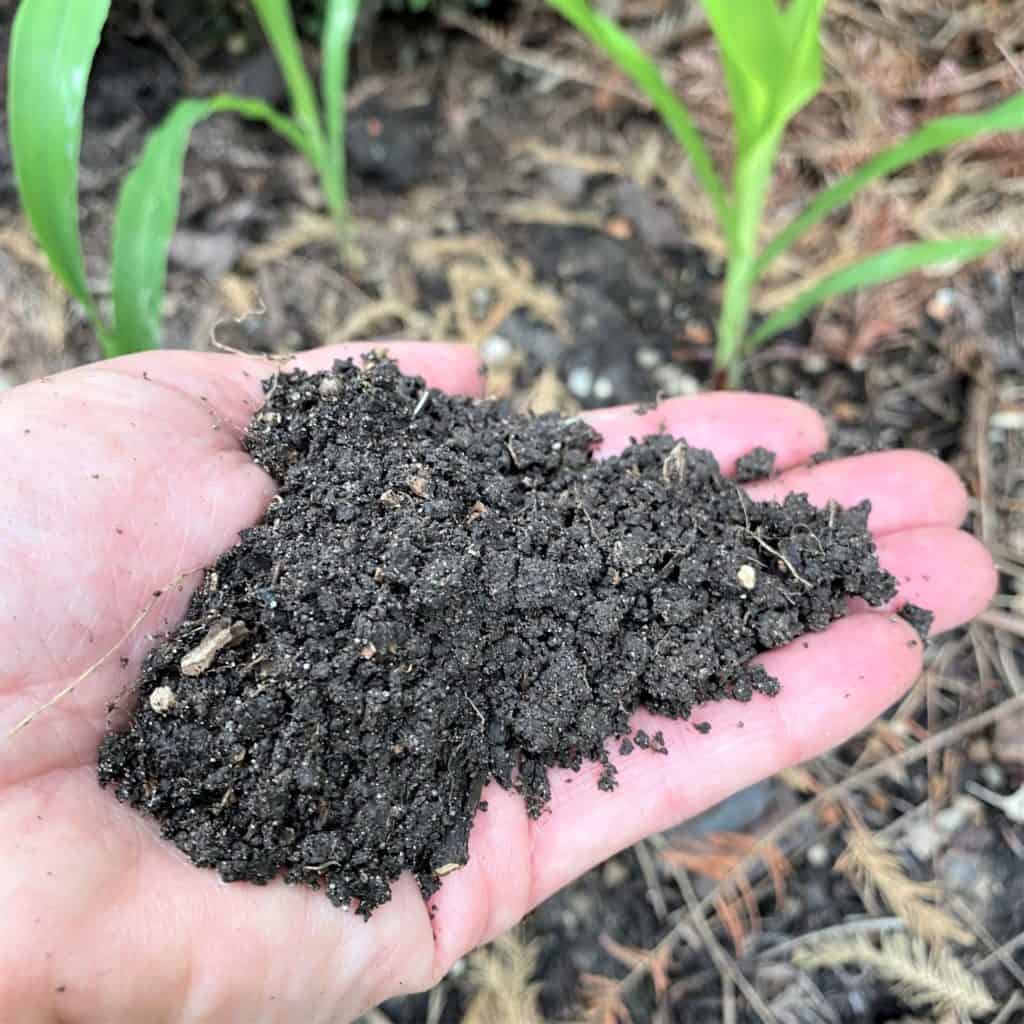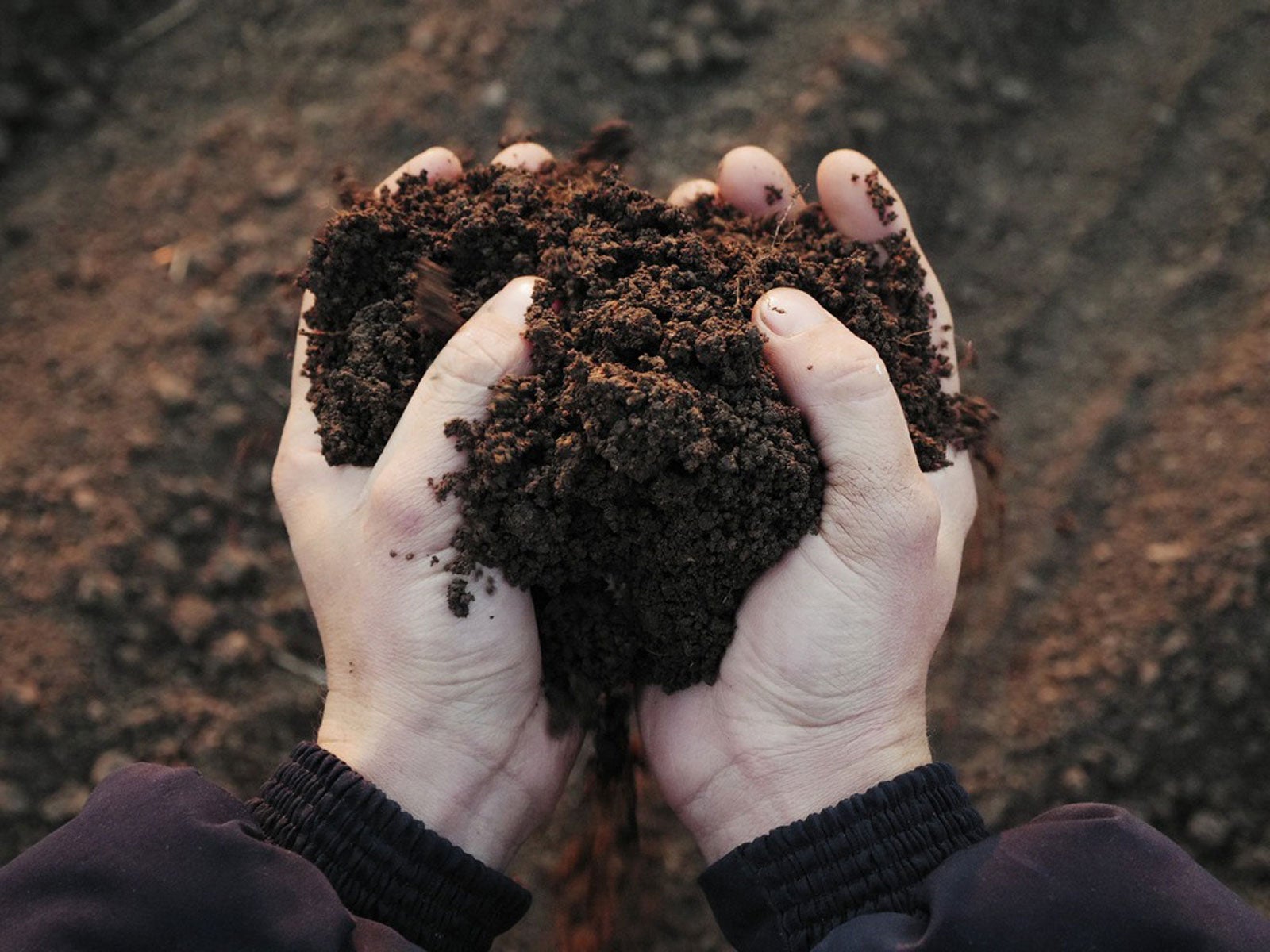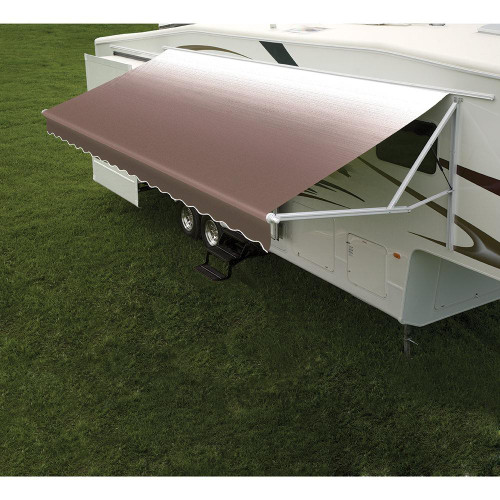Plants draw the nutrients they need to grow from the soil. Those nutrients usually need to be replenished every so often for the healthiest growth, no matter which type of soil you have. This is especially true for the soil where you grow annual flowers and vegetables, which suck up a lot of nutrients to fuel their rapid growth. Luckily, it's easy and inexpensive to restore nutrition by adding high-quality compost and/or granular or liquid fertilizer products as needed. If you're not sure if you need to add nutrients, a soil test is a quick way to check. To add nutrients and to replace organic matter as it breaks down, add 1-2 inches of compost to your garden beds in the fall.
Then you'll be all set for spring and can just add a layer of mulch after cleaning up and planting your beds for the new growing season. Garden soil is made of natural topsoil or sand blended with relatively inexpensive, bulky organic material. Ingredients like composted bark from mill operations, used mushroom compost, and composted cow or chicken manure are commonly blended into garden soil mixes. The coarse organic matter in garden soil improves the water holding capacity of sandy soils and loosens the texture of heavy clay soils for better root development in garden beds. The term "topsoil" refers to the top layer of soil on the surface of the earth.
Depending on the location, the topsoil layer may be 5 to 12 inches deep, and its texture may vary. For most gardening purposes, clay, silt and sandy topsoils should be avoided because they tend to retain moisture after it rains, preventing air from reaching the plant roots below. Some of the best types of topsoil include those with a loamy texture having a mixture of between 7 percent and 27 percent clay, 28 percent to 50 percent silt and under 52 percent sand. These topsoils tend to have a low water-retention capacity but they are easy to till. Compared to garden soil, topsoil is generally sold in larger quantities for large-scale landscaping needs.
Topsoil is also more of a general-purpose soil mixture that may not be mixed with as much fertilizer and organic matter as some garden soils. Perlite & Vermiculite are both volcanic in origin and both are put into potting mix to provide additional air space and to lighten things up so a potting mix is not too dense and heavy. Perlite does not provide any nutritional benefit and can collect fluoride if water containing it.
That means that flouride concentrates after a while and can burn the leaf tips of some houseplants like Dracaena and spider plant . It is rarely a problem with any outdoor flowering plants, so don't worry if it is in your potting soil unless you are growing these plants. No matter where you garden, it's worth improving the quality of the topsoil you've got. After all, plants rely on topsoil, the uppermost layer of the earth's surface, for water and necessary nutrients. The more organic matter it has, the darker the soil will look (like what you may see sold in bags or bulk as "black dirt"). This type of soil is very easy to dig in and support healthy plant growth.
However, the type of soil in your yard may look very different. Depending on your region, it can vary from reddish clay to beige sandy soil. Here's what you need to know about improving your topsoil. Unlike sandy soil, clay soil holds moisture well—sometimes too well. Fine soil particles stick together, allowing little room for drainage or for air to reach plant roots.
The solution is to break up the soil and add lots of organic matter such as compost, shredded leaves, peat moss and gypsum over time. A lot of consumers confuse heavy potting soil with good potting soil. In most cases when a bag of potting soil is very heavy there are two reasons for it; it is either water-soaked or it contains a lot of sand. Unless you are growing cacti, adding sand is usually not a great idea. In general, sand is added to a potting mix simply because it is a cheap filler. Sand was used instead of more expensive components like peat moss or pine bark.
If you live someplace with very high winds, a little sand can help hold plants in place, but in general it is not needed. Peat moss comes from the peat bogs of the northern United States and Canada; this is usually considered the higher quality type of peat moss. There are some peat bogs in the southern US, but they generally are considered to be slightly lower quality. Peat moss provides a great moisture retaining quality with good air space for healthy growing roots. For acid loving plants, like azaleas or Hydrangeas, this is sometimes the very best potting mix, however, for most flowering annuals peat moss by itself is too acidic.
So it is usually best to go with a blended potting mix that has all three ingredients. You can use straight peat moss as your potting mix, but be careful not to overwater. Peat moss all by itself can stay wet for a long time after watering your plants. If these materials are not available or if the soil is in poor physical condition the plants will not grow and develop properly.
To promote good growth and development of your plants, prepare the soil before planting by adding organic matter, applying fertilizers, correcting acidity, and plowing the seedbed properly. Take care of the soil during the growing season by applying starter fertilizer and by side dressing with fertilizer. Most new gardens don't have perfect growing conditions. Clay soil stays wet too long, but once dry it is difficult to moisten. The bulky organic material in garden soil is meant to be incorporated into the native soil in the garden bed to balance its water retention and drainage abilities, no matter the current texture. It helps sandy soil retain more moisture, and opens the texture of tight clay soil for better drainage.
Roots should be long and well spread out, not stunted. If root systems are healthy, this likely means the soil is nice and loose, allowing roots to reach out for nutrients easily. Another sign of healthy roots are white coloring with fine strands – almost hairy looking roots. If this is the case, a drainage issue may be the problem. Over time this can be fixed by adding more organic material to the top of your soil like compost, shredded leaves, grass clippings, trimmings from your plants, etc. For a quicker fix, you could try mixing in some peat moss to your soil.
Edible gardens should always be located away from hazardous areas. Building raised garden beds with clean topsoil minimizes the possibility of plants growing in unfit soil. Gardeners should always be sure to wash their hands thoroughly after working in the soil, as well as washing vegetables that will be consumed. Special attention should be paid to scraping root vegetables that have come into direct contact with contaminated soil.
Before adding raised bed garden soil mixture, I like to break up the ground surface underneath to give roots all the growing room they want, even when it's deeper than my beds alone provide. Clay soil is often not aerated enough and is deficient in good structure which makes it more difficult for successful growing. To get the most out of clay soil it's best to add large quantities of well-rotted organic matter in the fall and peat a few weeks before planting.
Greensand can also be used to loosen heavy clay soils or bind sandy soils. Meanwhile, potting soil mix contains no natural soil. It is a specially formulated mix made of peat moss, ground pine bark, and either perlite or vermiculite. Finally, potting soil includes a small amount of plant food.
These ingredients make potting soil a perfect replacement for natural soil in container gardens. If you are building on top of your native, non-contaminated soil; break up the ground surface before adding soil to the bed structure. Sandy soils have large particles and gaps between them. This allows water and nutrients to drain away freely, making sandy soils less fertile than heavier soils.
Sandy soils tend to dry out in the summer but they warm up quickly in spring and they are much easier to dig than clay-based soils. If your soil is sandy, you should have no trouble growing root vegetables such as carrots and parsnips, but you may struggle with nutrient-hungry brassicas such as cabbages and broccoli. Plants with shallow roots are prone to drying out as sandy soils lose moisture faster than heavier soils. Topsoil is a good choice for filling up raised beds, repairing eroded spots, or filling in holes.
When planting a new lawn or overseeding a patchy lawn, you can use a thin layer of topsoil to protect grass seeds as they sprout. One thing you shouldn't use topsoil for is filling your containers. It won't drain as well as you need it to in a container, and it makes your pots very heavy.
Stick with potting mix($7, The Home Depot) for containers, and use topsoil in garden beds. After the soil is sterilized, you'll likely need to amend it with peat moss and sand. These are things that will allow proper drainage and air flow while still retaining the right amount of moisture. They include peat moss and vermiculite along with a slow-release fertilizer. Together these things create a soil mix that holds nutrients, retains moisture, and provides ventilation for the roots of the plant. Garden soil and potting soil are formulated for different applications.
Ahead, we compare the two options—garden soil vs. potting soil—to help you select the material that enables your plants to thrive. I bought two LARGE bags of potting soil but when I got home, they were filled with the tiniest ants I've ever seen and they bite hard! I blamed it on being in the plastic bag for months and the hot, humid weather last summer.
So I figured the dirt would dry out and be fine if just to add dirt with no nutrients. NOTHING has grown in the bed – it doesn't smell but is void of life. The strawberries at the end of the bed died way back and a few have barely hung on. How can I rejuvenate my raised bed row that obviously has septic dirt over it – can I or do I dig the dirt out and throw it away, also? I want to plant more strawberries and don't know if I need to move the few I have left. After searching the internet, I couldn't find out anything about septic dirt until I saw your post.
How To Tell If Your Garden Soil Is Good Good soil provides just the right space between its particles to hold air that plants will use. Silty and heavy clay soils have small particles that are close together. Sandy soils have the opposite problem; their particles are too big and spaced out. The excessive amount of air in sandy soil leads to rapid decomposition of organic matter.
Organic soil is rich in humus, the end result of decaying materials such as leaves, grass clippings and compost. Good organic garden soil is loose and fluffy — filled with air that plant roots need — and it has plenty of minerals essential for vigorous plant growth. It is alive with living organisms — from earthworms to fungi and bacteria — that help maintain the quality of the soil. Proper pH is also an essential characteristic of healthy soil. Where more acute toxicity is present, one option is to hire a professional to safely remove the contaminated soil and replace it with clean soil. The less expensive and often more practical option is to build raised beds for planting food crops.
In this case, lay a sheet landscape fabric , on the bottom of the bed before adding topsoil. The fabric is designed to let moisture through, but prevents the roots from contacting the contaminated soil below. The term "garden soil" is often used on packages of premixed soils sold at home improvement stores, but it is not actually a separate type of soil.
Soil in a home garden has its own unique texture and combination of sand, silt, clay and various minerals. That way, you can be sure it will blend well with the existing soil in your garden. I like to add chopped leaves into the soil in the fall.
Run them over with your lawnmower and sprinkle into your beds to break down over the winter. When they're ready, I'll use the leaf mould to spread in my gardens. To maintain the health of even the best soil for a raised garden bed, adding organic matter every year is essential. Raised beds can be any size, but for a standard, rectangular bed, I recommend about three to four feet wide by six to eight feet long and 10 to 12 inches high. Those dimensions allow a gardener to reach in to plant, sow, and weed, without having to walk through it. This leads to another benefit of raised garden beds in comparison to gardening in-ground in traditional rows.
The soil in a raised bed will remain loose and friable, rather than being hard-packed over time by footsteps. We also know there is a whole web of micro-activity happening, so it's best not to disturb and compact the soil for that reason, too. Rock phosphate, or rock dust, is also a valued amendment to restore phosphorus levels needed for vigorous plant growth. Peaty soil is a darker soil and feels damp and spongy due to its higher levels of peat.
It is an acidic soil which slows down decomposition and leads to the soil having fewer nutrients. The soil heats up quickly during spring and can retain a lot of water which usually requires drainage. Drainage channels may need to be dug for soils with high peat content.
Peat soil is great for growth when blended with rich organic matter, compost and lime to reduce the acidity. You can also use soil amendments such as glacial rock dust to raise pH in acidic soils. If you're concerned about contaminants in your yard, you can also send your soil out to be tested. You will want to have it tested for lead, and most soil testing laboratories will test for "available" lead. If your levels are high or if you're just worried in general about contaminants, a great solution is to grow vegetables in raised beds, rather than planting them directly in the ground.
Often the soil needs more fertilizer, especially nitrogen, later in the season. Use 2½ pounds of ammonium nitrate, 2 pounds of urea, or 5 pounds of nitrate of soda per 1,000 square feet. Avoid getting dry fertilizer on plant leaves as it will injure them.
In dry weather, water the soil to make the fertilizer more quickly available to plant roots. It is generally not recommended that you entirely replace the soil in your lawn or garden, but additional soil is sometimes necessary if you intend to extend your garden or create raised beds. Before you purchase any new garden or topsoil, you should perform a soil test so you can match the pH of the new soil to the pH of the existing soil in your garden. Once you have purchased your new soil, till your garden well, then sprinkle on a few inches of the new soil. Till the garden again to incorporate the new soil, then add the rest of the soil on top. If you plan to fertilize your garden soil, it is best to do so after you have added the new soil and before you start planting.


























